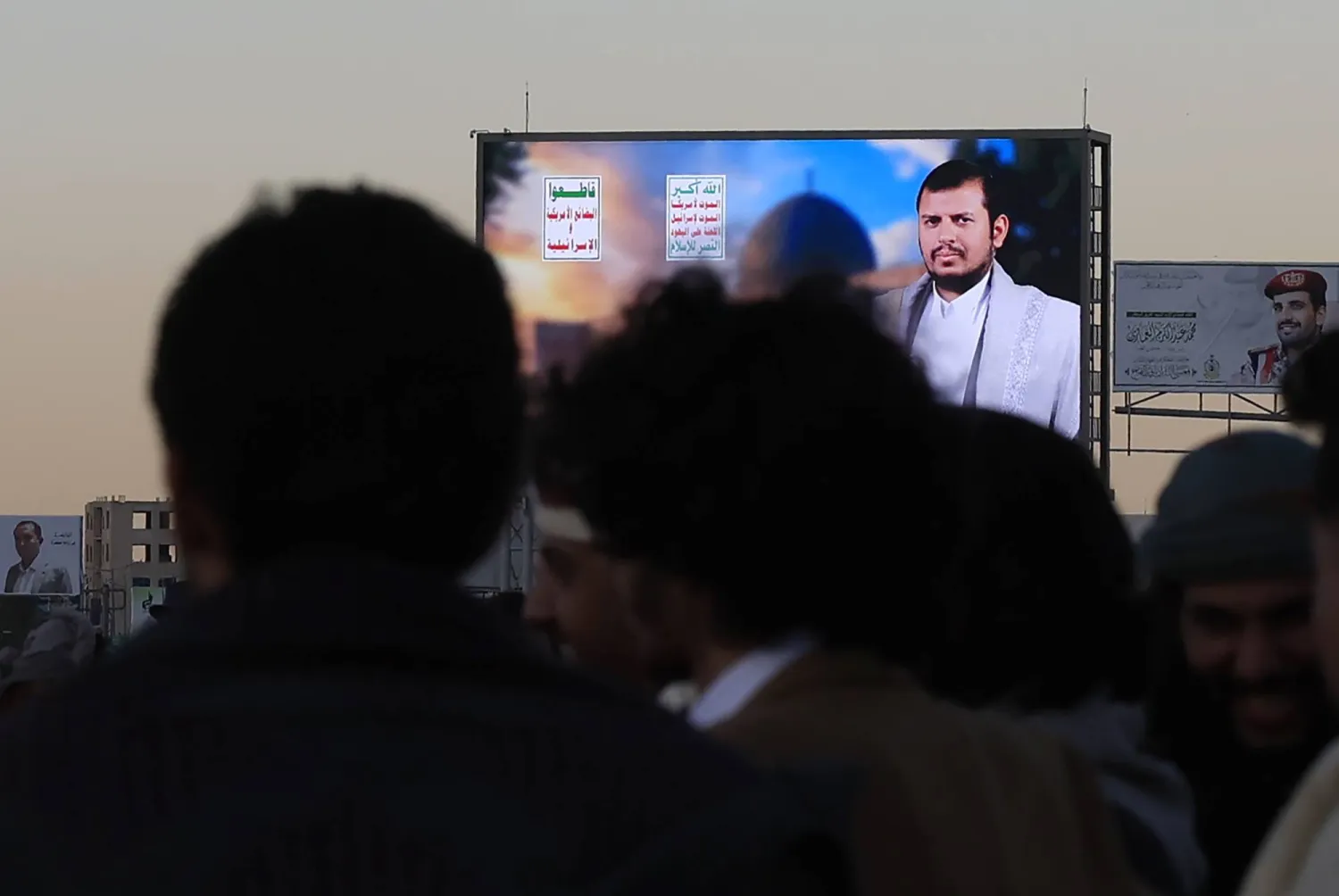In 1998, then Lebanese Prime Minister Rafik Hariri turned to his Syrian and French allies to prevent the election of staunch Syria ally Emile Lahoud as president. He found out that the decision to elect him was taken and not up for discussion.
He tried coexisting with the new president, but realized that Lahoud had only one agenda: weakening Hariri and ensuring his failure.
Hariri refused to surrender. Parliamentary elections in 2000 were held according to a law that was tailored to defeat Hariri, but the PM came out victorious, turning the table on Lahoud. Hariri was again appointed prime minister and Lahoud had no choice but to “booby-trap” his governments with ministers who would obstruct his agenda.
Asharq Al-Awsat sat down with Lebanese former Foreign Minister Farez Boueiz to discuss Lahoud’s two tumultuous terms in 1998 and 2004 and the president’s strained relations with Hariri.
Boueiz said he differed with Hairiri on political affairs, but they were united over a “calamity called Emile Lahoud.” At the time, Syria had enjoyed political and security hegemony over its smaller neighbor, Lebanon.
In 1998, Lebanese and Syrian officials began to float Lahoud’s name to late Syrian President Hafez al-Assad as a successor to Elias Hrawi. They explained that Lahoud, then army commander, was not interested in politics, but was rather more invested in other pursuits, such as swimming and other sports, allowing Syrian intelligence free reign to assume the role of president should he be elected.
These factors favored Lahoud’s election and led to Boueiz’s opposition to him. He declared that he would not have allowed Syrian intelligence to play the role of president.
Ultimately, pro-Syrian Lebanese parties and Syria itself succeeded in securing Lahoud’s election in 1998, paving the way for Damascus to have complete control over Lebanon. Boueiz believed that someone in Lebanon actually headed to Damascus on a daily basis to received the “order of the day.” Lahoud was not opposed to this. He did not argue, ask questions or object to any of this.
Assad died in 2000 and was succeeded by his son, Bashar, with whom Lahoud saw eye-to-eye. “Lahoud was content to do what he was told by Syria, believing that it knew more than us what to do. He was a very disciplined officer,” Boueiz said.
Minister in Hariri’s government
Boueiz said he did not expect to be appointed as a minister during Lahoud’s term in office, saying he was part of the opposition. Days before the formation of a government headed by Hariri, he learned from the media that he would be named minister of environment, rather than foreign affairs.
“Truthfully, I didn’t want to become a minister. I believe that being named minister of environment was a step down from minister of foreign affairs,” he stated, adding, however, that he had no real objections to the environment portfolio. “I soon arranged for a press conference so that I would declare my resignation as soon as a government is formed,” he revealed.
Moreover, he said Hariri had not even consulted him about being named a minister.
“One night, Hariri telephoned me. At the point, with Lahoud in office, the strained relations I had with Hariri were no more. We were united in our calamity,” Boueiz continued. He said the PM telephoned him to persuade him to be a minister in his government.
He explained that he needed a minister who would be loyal to him, expressing his confidence in Boueiz, whom he described as bold figure who could stand against Lahoud.
“Without you, I would be alone in the confrontation. I need Maronites by my side,” Boueiz recalled Hariri as saying.
Boueiz told Asharq Al-Awsat that he initially refused to be a “hired” or “mercenary” minister who would “wage Hariri’s wars.” “Hariri told me that he was certain that if I were part of the government, I would confront Lahoud. ‘I appeal to you and hope that you would consider this as a permanent understanding between us,’ the PM told me,” Boueiz added.
After much insistence, Boueiz relented and agreed to become minister despite knowing that he would be at odds with Lahoud.
Tussles at cabinet
“And so it was, I became a minister and disputes erupted over the smallest details. As minister of environment, I believed in environment work and I wanted to work,” stressed Boueiz. He recalled that he had drafted a project on “national planning for crushers.” “The ministry had poured all its energies into the project, while Lahoud avoided addressing it whenever I brought it up at cabinet. He did not want to approve it. He did not want to acknowledge that Fares Boueiz had made an accomplishment,” he recalled, saying he had proposed the draft no less than five times at cabinet.
“One day I received a telephone call from [head of Syrian intelligence in Lebanon] Rustom Ghazale,” said Boueiz. “I had served as foreign minister for nine years and not once did a Syrian security official telephone me. Now they were calling me even though I was just an environment minister with no real power.”
“For nine years no Syrian had contacted me and now Ghazale wanted to talk to me about crushers?! Syria only ever talked to you about politics,” remarked Boueiz.
“I told Ghazale that my project was ready, but I have no idea why Lahoud was not allowing it to be approved by the government. The next time the cabinet met, Lahoud told me, ‘We are still waiting on your crusher project.’ I smiled and knew that Ghazale had spoken to him. ‘It’s good that you have finally woken up to it. I have raised the issue at cabinet five times already and you have been avoiding it. I don’t know what happened to make you change your mind. Perhaps something unexpected has taken place,’” Boueiz added.
“Of course, the Syrians had their interests, and some political parties were perhaps benefitting from the crushers,” he told Asharq Al-Awsat.
Liaison between Lahoud and Syrians
Asharq Al-Awsat asked Boueiz about Jamil al-Sayyed, Lebanon’s head of General Security during Lahoud’s term. “Al-Sayyed was the liaison between Lahoud and the Syrians. In effect, he was the one bringing the ‘order of the day’ to Lebanon. He was Lahoud’s godfather and the official responsible for his behavior. He was the figure who had initially promoted Lahoud to Bashar al-Assad.”
As Lahoud’s time in office drew to an end, heated discussions started to emerge over the contentious issue of extending his term. Boueiz expressed his objection to the extension at cabinet. “Of course, I was unsuccessful. I also expressed my objection at parliament and was unsuccessful there as well.”
“Hariri, who was on a visit to Damascus, came back to inform us that the decision to extend Lahoud’s term had been taken by Syria. I informed him that I would resign as a result,” continued Boueiz. The next day, instead of submitting his resignation to Lahoud, he made the announcement to the media.
Lahoud’s extension and Syria’s threat
Boueiz vividly remembers the infamous visit Hariri paid to Damascus, which had demanded that he support the extension.
The PM traveled to the Syrian capital a week before the extension came into effect in 2004. He recalled that it was a Saturday and that Hariri had headed to Damascus at around 2 pm and was back in Lebanon two hours later.
“I headed to his mountain residence. I noticed that there were no guards around,” he added. He recalled seeing a defeated Hariri seated alone at the home. “‘There is nothing we can do. They want the extension,’ he told me. I asked him if he had fought against it, and he replied: ‘Do you insult me? What do you think?’ With tears in his eyes, he added: ‘They said they would destroy Lebanon on my head and on the head of [former French President and Hariri’s personal friend] Jacques Chirac.’”
Hariri’s assassination
Boueiz recalled to Asharq Al-Awsat the fateful day when Hariri was assassinated on February 14, 2005. The minister and PM were at parliament in downtown Beirut. Boueiz revealed that Hariri had invited him to his house for lunch, but he had to turn down the offer because he was scheduled to attend a parliamentary committee meeting on the electoral law.
“He told me ‘Why are you wasting your time? The law has already been prepared,’ nodding his head in Damascus’ direction. I told him, ‘I know that, but I will simply express my objection to it.’ He told me: ‘Listen to me, let’s go have lunch together. It will be more useful than this and we will prepare for what is to come.’ I again respectfully declined because I had commitments at the committee. ‘I will speak for five minutes and then catch up with you,’ I told him.”
“Of course, if I had agreed to the lunch invitation, I would have joined him in his car and would have died with him,” Boueiz said. Hariri was killed in a massive explosion in Beirut minutes later.
The minister completed his work at parliament and was speaking to the media when the explosion happened. He headed outside and saw a plume of black smoke in the near distance.
“I immediately got into a car. I sensed that Hariri was the target. I contacted his residence at Qoreitem and asked about him. The employee on the line asked if I wanted the call to be transferred to him. His answer led me to believe that Hariri was at his residence, so I declined and ended the call. Soon after, MP Farid Makari approached me and asked me who I thought was targeted in the attack. He too had contacted Qoreitem and believed Hariri was safe,” Boueiz said.
Boueiz and his entourage headed to the scene of the blast and were astounded by the devastation. “We didn’t linger and couldn’t make out anything from the scene. We turned back and I wanted to go to Hariri’s residence, still assuming that he was expecting me for lunch.”
“On my way, I came across journalist Faisal Salman. I stopped to talk to him, and he said: ‘My condolences and may he rest in peace.’ I asked him who he was talking about, and he told me: ‘Hariri’. I replied: ‘How? I am on my way to have lunch with him’. He told me that he had just come back from the hospital where he had seen his corpse. I couldn't believe it. I made my way to Qoreitem and saw the angry and mournful crowd and found out the truth.”
Boueiz then headed to the nearby residence of MP Walid Jumblatt who said a meeting would be held at Hariri’s house in hours to declare a united front and revolt against Emile Lahoud. The movement would become known as March 14.









